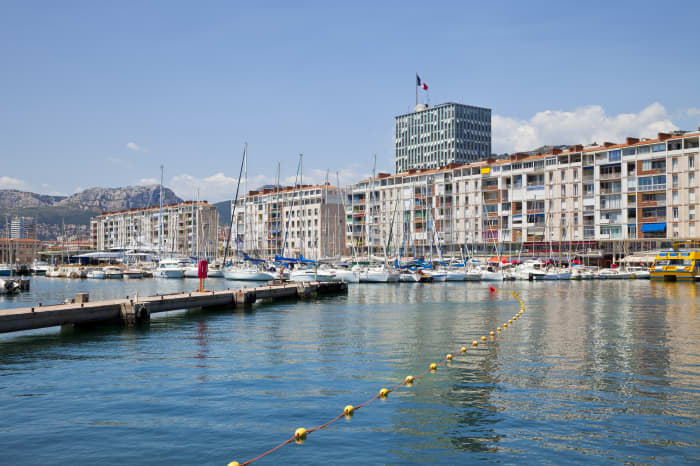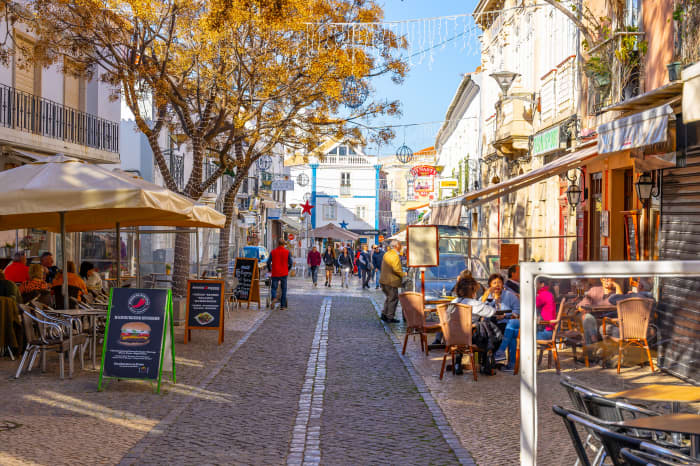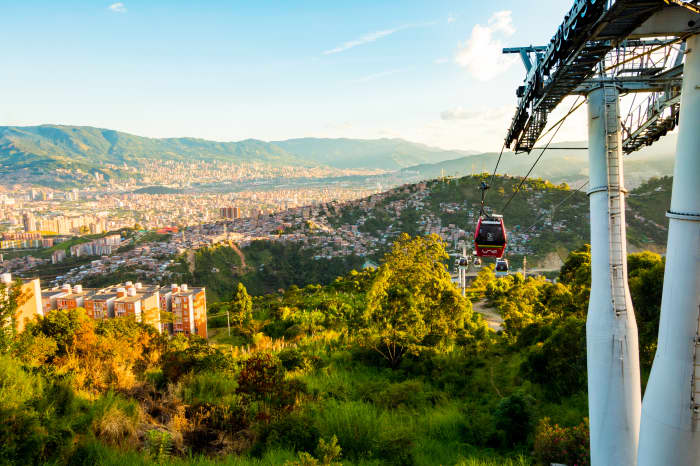This article is reprinted by permission from NextAvenue.org.
Soaring U.S. inflation and a moderating pandemic in much of the world are leading more Americans to pull up stakes and retire abroad. More than 440,000 Americans are now drawing Social Security retirement benefits outside the country.
“There are so many versions of trouble in the world today, from the pandemic to safety concerns to war — all manner of evils that can be keeping retirees up at night,” says Kathleen Peddicord, publisher of Live and Invest Overseas. “Retirees are looking for places to go where they don’t have to worry about any of those things.”
Jennifer Stevens, executive editor of International Living, puts it this way: “We are seeing people who have come through the pandemic and feel like, ‘You know what? I’ve been dreaming about [retiring abroad], waiting ’til the time was right. It’s now or never. I just need to do it.’”
Related: This couple retired in Colombia on $ 4,000 a month. In California, ‘to live this lifestyle, we’d have to be mega, mega millionaires’
New best places to retire abroad lists
So, where are the best places to go?
Two new lists — from Stevens’ International Living (IL) and Peddicord’s Live and Invest Overseas — are out with their answers. Those annual rankings combine data with on-the-ground reports from correspondents and reader input. The winning places are ones where the researchers say U.S. retirees can live comfortably, enjoy good weather and obtain visas pretty easily.
“Top places are ones where retirees can live comfortably, enjoy good weather and obtain visas pretty easily. They include towns in Mexico, Costa Rica and Panama, but many are in Europe.”
They feature familiar, warm spots known for expat populations, like Mexico, Costa Rica and Panama (“one of the O.G. overseas retirement destinations,” says London-based Live and Invest Overseas Editorial Director Sophia Titley). But the big news is the large number of European locales in their top 10 places to retire abroad.
Credit the strong U.S. dollar — the strongest in 20 years — for making Europe more of a bargain, particularly for housing. Some rural European towns are actively courting U.S. expats, offering fixer-upper homes for one euro to move to what are dubbed “Little Americas.”
“It really is a window of opportunity for someone who has dreamed of retiring in Europe but thought they could never afford it,” says Peddicord, who splits her time between Panama and Paris.
International Living ranks 16 countries known to be expat friendly. Five of its top 10 are in Europe: Portugal (No. 1), Spain (No. 6), Greece (No. 7; it wasn’t even in IL’s top 10 a year ago), France (No. 8) and Italy (No. 9).
“If you ever wanted to own a little place in Portugal, Italy, France or Spain, now is the time to go buy it. Because who knows how long the dollar will be this strong, right?” says Stevens, who is based in Colorado Springs, Colorado. Many economists expect the dollar to remain strong in 2023.
See: What would you regret if your retirement lasted only one year? Don’t delay joy in retirement.
Although International Living ranks locales by country — due to comparable data — it then specifies three communities or regions within each that are especially affordable and safe.
Not pricey Paris, for instance, but instead the French towns of Toulon in Provence (one-bedroom apartment monthly rent: about $ 600); remote Sarlat-la-Caneda (9,000 residents) and the quaint fishing village of Huelgoat in Brittany (two-bedroom, move-in cottages sell for roughly $ 170,000).
Read: I told friends I was moving to France for a year. It’s now 4 years later, and I’m building a house in this village of 1,200 people.

Toulon, France
istock
Portugal rises to the top
IL’s managing editor Nazaren Heazle calls Portugal — which is half the size of Kansas — “a great-value European gem” with generally wonderful weather, a laid-back lifestyle and a huge variety of appealing locations for retirees. A retired couple can live comfortably there on about $ 2,500 to $ 3,000 a month, according to the rater’s researchers.
Portugal also ranks as the sixth-safest nation in the world in the 2022 Global Peace Index.
Three IL favorites in Portugal are the south coast towns of Lagos, Vilamoura and Tavira.
Although Portugal has a public healthcare system, it can get overwhelmed; the country’s private healthcare system is considered high quality and affordable in big cities, though.
Portugal wants Americans to retire there, says U.S. expat Carla Fried who lives in Lisbon and loves it. “It lost 10% of its population from 2010 to 2020,” she notes.

Lagos, Portugal
istock
Beware the bureaucracy
But there’s one drawback for retiring in Portugal, says Fried: the bureaucracy. “You need to play by their rules and be incredibly patient when applying for residency or a driver’s license,” she advises.
Rounding out International Living’s list are three countries in Central America — Mexico (No. 2); Panama (No. 3) and Costa Rica (No. 5) and one apiece in South America and Asia: Ecuador (No. 4) and Thailand (No. 10).
Mindful of crime in many parts of Mexico (the State Department advises Americans not to travel to six of Mexico’s 32 states and exercise increased caution in 17), IL recommends the safe spots of Lake Chapala, the touristy beach city of Playa del Carmen and the artsy north-central state of Querétaro.
“Mexico is not expensive to get to for Americans and definitely not expensive to live in,” says Stevens. “It has such a well-established expat community that Mexico is arguably the easiest place in the world to be an expat.”
Live and Invest Overseas starts its annual ranking with roughly 15 core countries for expat retirees and then narrows those down to its Top 10 list of communities.
A hidden gem in Panama
This year, No. 1 is Chitré, Panama. But four in the Top 10 are in Europe: Tavira, Portugal (No. 2); Kyrenia, Northern Cyprus (No. 4); Costa de la Luz, Spain (No. 6) and Paris (No. 8). Two are in Central America: Corozal, Belize (No. 5) and Oaxaca, Mexico (No. 7); two are in Asia: Sanur, in Indonesia’s Bali (No. 9) and Da Lat, Vietnam (No. 10) and one’s in South America: Medellín, Colombia (No. 3).
“One thing we’re focusing more on is places with low population density and wide-open spaces,” says Peddicord. “The cliché always was to escape the rat race. I think today, people just want to escape — period.”
Unfamiliar with her No. 1 place, Chitré, just off the Gulf of Panama? Don’t worry; the small town wasn’t even on the radar of Peddicord or her husband Lief Simon until recently.
“We’ve lived in Panama for 15 years now, but I had never really paid attention to Chitré,” Peddicord says. “We have an expat writer who retired there with his wife, and he said, ‘You guys have to look at this place.’ We were finally able to go look, and I thought it was amazing.”

Medellín, Colombia
Getty Images
Titley says Chitré is a friendly, affordable town with big-city amenities. “You could live there close to the beach for much less than the average cost of living in a comfortable location in the United States,” she says. Its U.S. expat population, however, is small.
A rough time to retire anywhere
While retiring abroad may sound tantalizing, this is a particularly rough time for Americans to start retirement anywhere, says Dave Goodsell, architect of the 2022 Natixis Global Retirement Index of 44 developed countries. (The U.S. ranks No. 18.)
“It’s one of the worst years to retire in a long, long time” due to the worst U.S. stock market since 2008 and a lousy bond market, he notes. “Retirees may be starting out with 15% to 20% less than they thought they would have. Then you have inflation.”
Inflation has been a boogeyman around the world lately, of course. But the strong dollar and lower costs in many countries relative to the U.S. is often making inflation manageable to expats.
The cost of living in the top places
Portugal, for example, is 37% less expensive than the U.S., according to the cost-of-living site Numbeo. “It’s still a good value, but not the best value in the world,” says Stevens. “It’s going to cost more than a few years ago because now Portugal has sort of been discovered.”
An apartment for a retired U.S. couple in Panama — where the overall cost of living is 33% below America’s — goes for about $ 1,900 to $ 2,000 a month. A year ago, it would’ve cost $ 1,700, says Stevens.
Related: I never expected to retire to Panama — but we are living ‘very comfortably’ on $ 1,200 a month
Although Titley says Panama has “historically been a good place to ride out a recession,” and is known for its attractive “pensionado visa” benefits for some expats, neither her organization nor IL are enthusiastic about all parts of Panama.
“We say that Panama has great healthcare, which it does, but not every single place in Panama — just the places we recommend,” says Stevens. The Panamanian places IL recommends are bustling Panama City; the resort haven of Coronado and the highland town of Boquete where, Stevens says, “it’s springlike year-round.”
The U.S. State Department has issued safety warnings for two other areas of Panama (the Mosquito Coast and the Darien region).
Check out: You could retire to Spain for half the cost of Florida
Advice for retiring abroad
If you’re considering retiring abroad in 2023, here are five tips:
Make yourself a list of your must-haves in a new location. “Focus on the things that are important to you,” says Simon. “Gas prices might be important while you’re working and commuting, but maybe not so much if you move to a city where you’re going to be walking.”
Some people prefer four-seasons weather; others like sunny days all-year-round. A site like WeatherSpark can let you find historical monthly weather data from places around the world.
Utility costs will be important in locales that can get very hot or cold, but they’ll be irrelevant in spots with moderate temps. “Here in Europe, the cost of utility bills this winter is a big deal,” Peddicord notes.
“Each person needs to weigh what level of risk they’re comfortable with,” says Titley. “Indonesia is one of the most natural-disaster prone places, but my mom and sister live in Bali. They seem OK with the risk.”
Just keep in mind, says Fried, that “there is no foreign country that will have all the things you like.”
International Living’s rankings table lets you see how each country scored in categories ranging from housing to visas and benefits to cost of living to healthcare.
Live and Invest Overseas’ index is available as part of its $ 36 annual subscription, or you’ll be able to buy it alone in late January for about $ 40.
Plus: This Ecuadorean city in the Andes has perfect weather — and you can retire there for as little as $ 1,500 a month
The Natixis Global Retirement Index offers details about health, finances in retirement, quality of life and material well-being in dozens of developed countries including Mexico, Australia, New Zealand, Israel, Colombia and more than 20 in Europe.
Get help from others to learn about the pros and cons of retiring abroad. “A financial adviser can help with that,” says Goodsell.
Also, expat groups on Facebook can give you an insider’s guide. “Most places that have a decent-sized expat population will have a Facebook group,” says Stevens. Some of the groups are private, but you can ask to be let in as someone considering relocating to their area.
Learn about a country’s visas, residency and tax rules. The VisaGuide.World and Visadb sites explain the assortment of visas globally. You can also find specifics about a particular country’s visas through the USEmbassy.gov site. Bear in mind: it can take months to actually get a visa.
If you hope to work part-time in retirement abroad, look into what are known as “digital nomad” visas, available in 49 regions around the world including Belize, Colombia, Cyprus, Ecuador, Greece, Indonesia, Italy, Panama, Spain and Thailand.
And if you plan to retire in Europe, you may want to investigate getting a European Second Passport. It lets you travel freely as long as you want, visa-free, around the region.
“Another benefit to having a European Second Passport is that you can make [local] investments that might be limited or inaccessible to you as an American citizen only and you can lower your tax bill,” says Stevens.
Some countries offer special tax breaks for certain expats. For instance, Portugal has the “non-habitual resident (NHR) tax regime” program for the first 10 years of residence for certain expats. It’s a flat 20% tax rate (vs. the normal Portuguese maximum tax rate of 48%) and no taxes on dividends, interest or capital gains.
When moving overseas, rent before you buy. Renting will give you a chance to explore a community or neighborhood and then switch to a different one if you desire.
Buying a home is a major, long-term commitment.
Finally, be honest with yourself about what you could be getting into. “Retiring overseas can be a scary, intimidating idea for a lot of people and it isn’t for everyone,” says Peddicord. “It has a lot of upsides, but it requires work and effort. And it’s not only hard while you’re planning for the move, but even after you’ve made the move. You need to be prepared for that.”
Don’t miss: I told friends I was moving to France for a year. It’s now 4 years later, and I’m building a house in this village of 1,200 people.
Don’t pass up the opportunity because you’re afraid, she adds, “but don’t underestimate how challenging it will be either.”
Richard Eisenberg is the former senior web editor of the Money & Security and Work & Purpose channels of Next Avenue and former managing editor for the site. He is the author of “How to Avoid a Mid-Life Financial Crisis” and has been a personal finance editor at Money, Yahoo, Good Housekeeping, and CBS Moneywatch.
This article is reprinted by permission from NextAvenue.org, ©2023 Twin Cities Public Television, Inc. All rights reserved.
More from Next Avenue:
